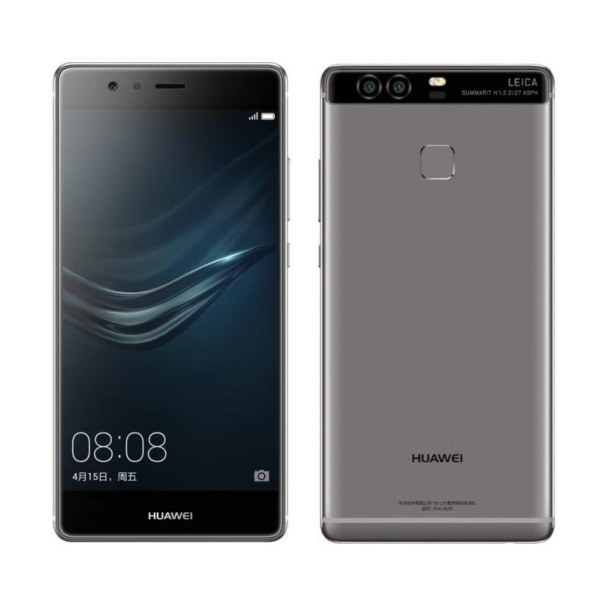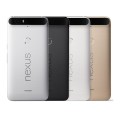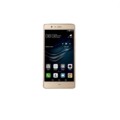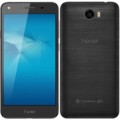- Home
- List of devices
- Huawei
- Huawei P9
Huawei P9


-
CPU: HiSilicon Kirin 955
-
RAM: 3GB | 4GB
-
Storage: 32GB | 64GB
-
Display: 5.2" 1080p
-
Camera: Dual 12mp rear | 8mp front
-
OS: Android 6.0.1 Marshmallow | EMUI 4.1
The Huawei P9 is the first smartphone co-engineered with the global iconic brand, Leica Camera AG. The P9’s dual-lens camera takes smartphone photography to the next level, allowing people to capture both vivid colors and striking black and white images. Huawei’s new B3 Talkband wearable wristband also made its global debut.
A groundbreaking moment for event guests included a first look at an exclusive trailer of the new Huawei P9 TV commercial starring Henry Cavill and Scarlett Johansson, Global Product Ambassadors for the Huawei P9 series. Showcasing the connection between two global stars in Shanghai and Hollywood, the trailer symbolizes the partnership between Huawei and Leica and the intersection of color and black and white. Cavill was joined at the P9 launch by iconic photographers Mary McCartney and David Guttenfelder from National Geographic as well as BBC Global News CEO Jim Egan, Condé Nast Chairman and Chief Executive Jonathan Newhouse, Vogue China Publisher Anita Chang and Huawei UK Board Members Sir Andrew Cahn and Dame Helen Alexander.
“Huawei is excited to give P9 users the best smartphone photography experience by leveraging the unrivalled capabilities of Leica, the leader in the world of imaging for more than 100 years,” said Richard Yu, CEO, Huawei Consumer Business Group. “Consumers around the world use their smartphones to take billions of pictures each year, making photography critical to user experience. P9 users can now capture images with unmatched clarity, richness and authenticity, with a masterfully designed and powerful smartphone that looks and feels incredible.”
Reinventing Smartphone Photography
Integrating the design values and engineering excellence of Huawei and Leica in a smartphone photography system co-engineered by the two companies, the P9 brings together best-in-class hardware and software, from optical lenses, to sensors, to image processing algorithms, empowering users to capture the highest-quality images.
Key to the P9’s superlative imaging capabilities is a dual-camera design that fully unleashes the power of Leica’s optical lenses, renowned for precision and attention to detail, and subject to the industry’s most stringent quality screening requirements. The RGB camera on the P9 specializes in capturing color, while the monochrome camera is outstanding at acquiring picture detail. The two rear cameras of the P9 work in tandem to enable users to create images of superior detail, depth and color. The P9 truly excels in low-light conditions, as the dual-camera design guarantees more light and detail can be captured.
Each picture taken by the P9 carries the unique emotional resonance and timelessness that are the hallmarks of Leica, as users may choose between three film modes: Standard, Vivid Colors and Smooth Colors, depending on their personal preferences. With meticulous calibration of the P9’s camera parameters, each film mode faithfully renders the authentic color and style of Leica. By selecting the monochrome mode, P9 users can use their devices as a true monochrome camera to capture powerful and evocative black and white images of superior quality.
Deploying Huawei’s Hybrid Focus technology, the P9 captures images with superior speed, accuracy and stability. The P9 supports camera focusing based on three methodologies – laser, depth calculation and contrast – and automatically selects the one that yields the best result in any given environment.
The wide-aperture photography feature on the P9 allows users to experiment with innovative visual effects to create unique images and content. The P9 makes it easy to adjust the camera aperture to create bokeh and other depth-of-field effects, while keeping the main object in sharp focus.
“Leica and Huawei share an uncompromising commitment to imaging excellence, and our partnership will put outstanding photography into the hands of more consumers around the world,” said Oliver Kaltner, CEO, Leica Camera AG. “We are deepening our collaboration to give users a more optimal smartphone photography experience.”
Taking Industrial Design to a Higher Level
The P9 is a masterpiece of state-of the-art industrial design, with the same minimalist design DNA as earlier products in Huawei’s acclaimed flagship P-series of premium smartphones. Each P9 device is a perfect construct of superior-grade 2.5D glass and an aerospace-class aluminum, with diamond-cut edges rounded out by carefully balanced curvatures.
The 64GB version of the P9 comes in a stunning and unique Haze Gold finish, setting new industry standards in industrial design, with the use of techniques including brushed hairlines and metal polishing at micron-level precision to create a translucent metal surface. Additionally, the Ceramic White version of the P9 is smoother than the painted bodywork of premium cars, reflecting and refracting light to present different shades of awe-inspiring colors as ambient conditions change.
Power and Performance
The P9 is equipped with the power, connectivity and speed that today’s high-end smartphone user expects from Huawei. With a 5.2-inch 1080p display, the P9 is powered by the new Kirin 955 2.5GHz 64-bit ARM-based processor for leading-class mobile performance. The 3,000mAh high-density battery offers P9 users outstanding mobility and battery life.
Huawei is also unveiling the P9 Plus, featuring a 5.5-inch Press Touch display and a larger 3,400mAh battery. The P9 Plus also offers dual-IC Rapid Charge, giving users six hours of talk time after a 10-minute charge.
Leveraging Huawei’s industry-leading capabilities in telecommunications, the P9 and P9 Plus offer unrivaled new features including a virtual-triple-antenna architecture, designed for users who need robust and seamless connectivity to cellular and Wi-Fi networks to fully harness the power of the mobile Internet no matter where they are in the world.
The P9 and P9 Plus also protect users’ privacy and information security with Huawei’s world-leading biometric fingerprint recognition technology. The enhanced fingerprint sensor allows users to personalize and safeguard their devices by significantly lowering the possibility of fraudulent or accidental device access, while also ensuring users can quickly and securely access their smartphone.
Specs
General
| Price | 39,999 |
| Announced | 19 April, 2016 |
| Released | 17 August, 2016 |
| Status | Available |
Display
| Display Type <strong>Display Technology => </strong> A number of display technologies and types used in mobile phones => TFT (Thin Film Transistor), IPS (In-Place Switching), OLED (Organic Light Emitting Diode), AMOLED (Active-Matrix Organic Light-Emitting Diode), Super AMOLED (an even advanced version of AMOLED), Resistive Touchscreen (Resistive touchscreens contain two layer of conductive material with a very small gap between them which acts as a resistance), Capacitive Touchsceen (Capacitive touchscreen technology consists of a layer of glass coated with a transparent conductor) | IPS |
| Size | 5.2 |
| Resolution | 1920 x 1080 |
| Pixel Density <strong>Pixel Density (PPI)</strong> is refers to the concentration of pixels on a particular display, measured in pixels per inch (ppi). Pixel density is calculated by dividing the diagonal pixel resolution of a display by its diagonal size, higher pixel density better display quality. | 424 ppi |
| Features | 2.5D screen |
| Secondary Display | No |
Hardware
| Chipset <strong>Chipset</strong> is a group of integrated circuits designed to perform one or a more dedicated functions, often with real time computing constraints, Popular smartphones are equipped with more advanced embedded chipsets that can do many different tasks depending on their programming. | HiSilicon Kirin 955 |
| CPU <strong>CPU</strong> (Central Processing Unit) mostly known as processors, CPU processes instructions in order to carry out certain functions that make your device operate properly. Processors are often described as the brain of computers, smartphones and tablets, Smartphones and tablets rely on processors to carry out their every task, Processors are an incredibly important factor in selecting any type of computing device, including your smartphone. | ARM Cortex Octa-core (4 x 2.5 GHz A72+ 4 x 1.8 GHz A53) |
| GPU <strong>GPU</strong> (Graphics Processing Unit) is a single-chip processor designed to rapidly manipulate and alter memory to accelerate the creation of images in a frame buffer intended for output to a display, This includes things such as lighting effects, object transformations, and 3D motion. | ARM Mali-T880 MP4 |
| RAM (Memory) <strong>RAM</strong> (Random Access Memory) is a type of computer memory that can be accessed randomly, any byte of memory can be accessed without touching the preceding bytes that allows information to be stored and accessed quickly from random locations. RAM is the most common type of memory found in computer systems, smartphones, tablets and other electronic devices. | 3GB | 4GB |
| Internal Storage <strong>Internal Storage</strong> is a data storage space (flash memory) mostly used in smartphones, tablets and other electronic devices where operating system, apps, music, photos, videos, files and other user data Is stored. | 32GB | 64GB |
| Card Slot <strong>Memory Card Slot</strong> is a special slot for inserting a memory card. Memory cards allow you to expand the phone's built-in memory, A memory card (sometimes called a flash memory card or a storage card) is a small storage medium used to store data such as text, pictures, audio, and video, for use on small, portable or remote computing devices such as mobile phones, mp3 players, digital cameras. | Yes, Up to 256Gb |
| Sensors <strong>Sensors</strong> are electronic components that detects and responds to some type of input from the physical environment. The specific input could be light, heat, motion, moisture, pressure and location, The output is generally a signal that is converted to use in computing systems, a location sensor, such as a GPS receiver is able to detect current location of your electronic device. | Fingerprint Sensor, G-Sensor, Gyroscope sensor, Compass, Ambient Light Sensor, Proximity sensor, Hall effect sensor |
Battery
| Battery Type <strong>Battery Type => </strong> Cell phones run on various kinds of batteries depending on the manufacturer, phone size or shape and features. There are basically four types of cell phone batteries => Lithium Polymer, Lithium Ion, Nickel Metal Hydride and Nickel Cadmium. | Li-Ion (Lithium Ion) |
| Capacity <strong>Battery Capacity</strong> is a measure (typically in Amp-hr) of the charge stored by the battery, and is determined by the mass of active material contained in the battery. The battery capacity represents the maximum amount of energy that can be extracted from the battery under certain conditions. | 3000mAh |
| Fast Charging | Yes |
| Wireless Charging <strong>Wireless Charging</strong> (Inductive Charging) uses an electromagnetic field to transfer energy between two objects. This is usually done with a charging station. Energy is sent through an inductive coupling to an electrical device, which can then use that energy to charge batteries or run the device. | No |
Camera
| Primary <strong>Camera</strong> is able to capture photographs and usually videos, The most important characteristics of a camera are the resolution (measured in megapixels), lens focus type (fixed or automatic), higher megapixel cameras are known to capture higher quality photos, but not always a good measurement of the photos quality. | Dual 12mp Leica sensors |
| Camera Features |
F2.2 BSI CMOS Dual-tone flash |
| Secondary | 8mp, F2.4 |
| Video | Up to 4K recording |
| Flash <strong>Flash Light => </strong> There is commonly two types of flash lights are used in camera mobile phones, LED Flash (LED flash offers lower power consumption with drive circuitry that takes up very little room, LEDs can be strobed faster than any other light source), Xenon Flash (xenon flash produces an extremely intense full-spectrum white light for a very short duration) | LED Flash |
Design
| Type <strong>Design Type</strong> called form factor refers to a mobile phone's size, shape, and style as well as the layout and position of major components of phone. There are three major form factors seen in mobile phones => bar phones, folding phones and sliding phones. | Bar |
| Dimensions | 145mm * 70.9mm * 6.95 mm |
| Weight | 144 grams |
| Colors | Gold, Silver, Grey |
Network
| SIM <strong>SIM</strong> (Subscriber Identity Module) is a small card that contains mobile network subscriber's account information. This allows the phone using the card to attach to a mobile network. The SIM card is most commonly associated with GSM and UMTS mobile networks. Moving a SIM card from one phone to another allows a subscriber to switch mobile phones without having to contact their mobile network carrier. SIM cards can also be used by a phone to store limited amounts of data, such as phone numbers and text messages. | Nano SIM |
| VoLTE Support for VoLTE | |
| Dual SIM | Yes |
| 2G Network | Yes |
| 3G Network | Yes |
| 4G Network | Yes |
Software
| Operating System <strong>OS => </strong> Every computer system run on a base software called Operating System (OS). Operating System controls all basic operations of the computer (such as smartphone, PDAs, tablet computers and other handheld devices). The Operating System allows the user to install and run third party applications (apps), apps are used to add new functionality to the device. | Android 6.0 Marshmallow |
| User Interface <strong>UI</strong> or user interface of a device is the look and feel of the on-screen menu system. How it works, its color scheme, how it responds to button presses, all of these things are part of the user interface. | EMUI 4.1 |
Connectivity
| Bluetooth <strong>Bluetooth</strong> is a wireless communications technology for exchanging data between mobile phones, headsets, computers and other network devices over short distances without wires, Bluetooth technology was primarily designed to support simple wireless networking of personal consumer devices. | v4.1 |
| Infrared <strong>Infrared</strong> connectivity is an old wireless technology used to connect two electronic devices. It uses a beam of infrared light to transmit information and so requires direct line of sight and operates only at close range. | |
| Wi-fi <strong>Wi-Fi</strong> is a popular wireless networking technology using radio waves to provide high-speed network connections that allows devices to communicate without cords or cables, Wi-Fi is increasingly becoming the preferred mode of internet connectivity all over the world. | 802.11 b/g/n/ac |
| USB | Type-C reversible connector |
| GPS <strong>GPS</strong> The Global Positioning System is a satellite-based radio navigation system, GPS permits users to determine their position, velocity and the time 24 hours a day, in all weather, anywhere in the world, In order to locate your position, your device or GPS receiver must have a clear view of the sky. | Yes |
| NFC <strong>NFC</strong> (Near field communication) is a set of standards for smartphones and similar devices to establish peer-to-peer radio communications with each other by touching them together or bringing them into proximity, usually no more than a few inches. |



